Dennis Lillee’s record was a Boxing Day Test gift to MCG crowd
FOR a decade, Dennis Lillee had achieved the near-impossible, beating severe injury to become one of cricket’s most feared bowlers. But at the hallowed MCG in 1981, he made his greatest mark.
News
Don't miss out on the headlines from News . Followed categories will be added to My News.
DENNIS Lillee had cemented his place as one of the world’s best Test bowlers when he achieved one of his greatest milestones during the Boxing Day Test against the West Indies 35 years ago.
He was already a venerated player when he became cricket’s greatest wicket-taker at the MCG on December 27, 1981, with stadiums full of fans chanting “Liiiil-leeee! Liiiil-leeee! Liiiil-leeee!” with every step of his long run-up to the crease.
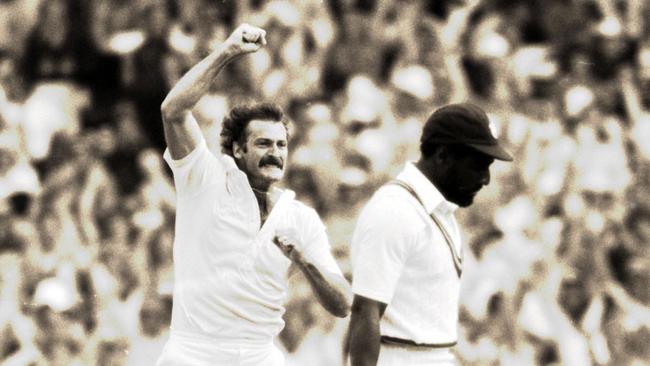
Lillee was a wild-haired, blisteringly fast young West Australian fast bowler when he made his Test debut, aged 21, against England in the Adelaide Test in January 1971.
He tore the heart out of the Poms in the Ashes tour of England in 1972, taking 31 wickets at an average of 17.67.
During the Aussie tour of the Caribbean the following year — the same year he was named Wisden cricketer of the year — he broke down and was diagnosed with three stress fractures in his lower spine.
Lillee was out of the game for more than a year, undertaking intensive physiotherapy and refashioning his bowling action in a manner than somehow also made him a more potent wicket-taker.
In the summer of 1974/75, he returned to the Test arena and his fiery best.
He and Jeff Thomson terrorised England’s batsmen and defeated the old enemy 4-1 in the Ashes series at home, then with the addition of Max Walker, the quicks did it again on English turf in 1975.
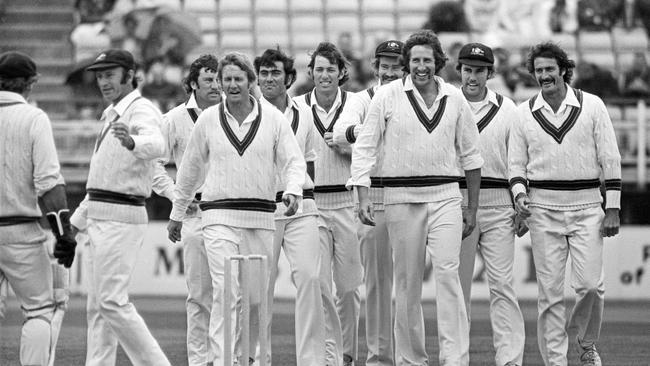
By now one of the world’s foremost fast bowlers, Lillee was also an outspoken critic of the paltry amount cricketers were paid by the Australian Cricket Board.
His matchwinning performance in the Centenary Test against England at the MCG in March 1977 was his last before his defection to Kerry Packer’s World Series Cricket, leading many other members of the Aussie side to Packer’s camp.
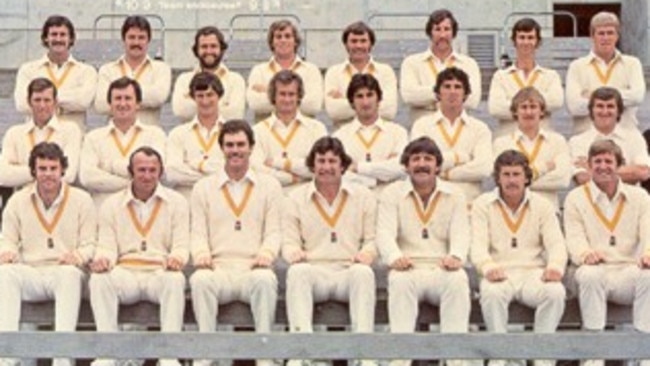
During this time, he wowed crowds while continuing to hone his action — shortening his run-up and developing off and leg cutters to devastating effect.
By the Boxing Day Test in 1981, Australia came up against a West Indies side at the height of its powers but with Lillee on the verge of overtaking the great West Indian Lance Gibbs’ record of 309 Test wickets.
On the opening day, Australia looked in trouble, with Kim Hughes’ 100 not out the only standout in the home side’s dismal total of 198.
But then Lillee and Terry Alderman carved through the formidable Windies top order.
RELATED: Australia scrapes past Pakistan
Lillee claimed the scalps of opener Desmond Haynes, nightwatchman Colin Croft and the great Viv Richards, leaving the tourists reeling at 4/10.
Part way through day two, the tourists had recovered to 6/134, with Lillee on figures of 4/54, when he began the history-making over.
Batsman Larry Gomes looked settled, with 55 runs, as Lillee steamed in with his shirt buttoned characteristically low and his gold medallion dancing across his chest.
He delivered the ball almost from wide of the stumps, angling away from the left-handed Gomes.
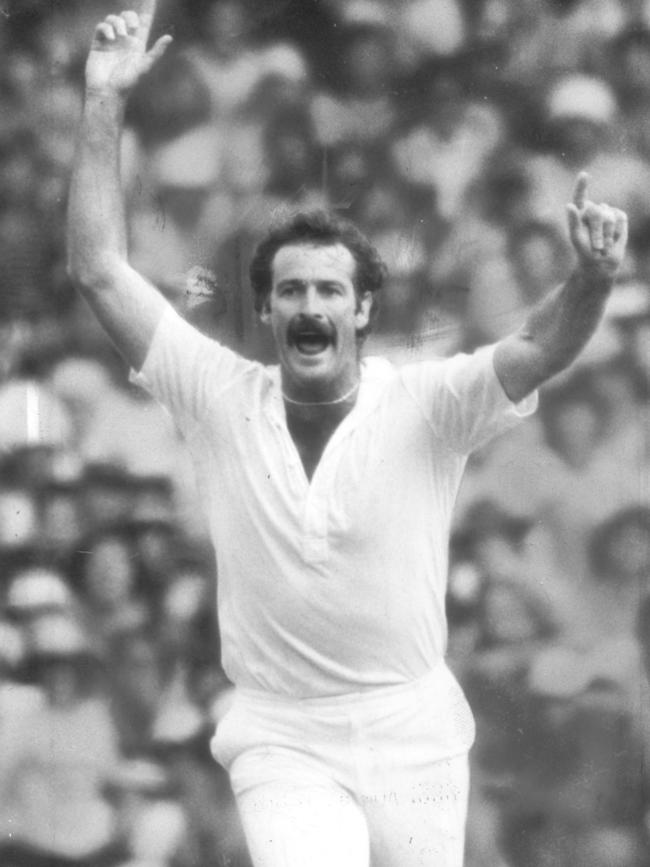
The ball cut sharply from the pitch, deceiving Gomes, who sent a thickish edge to the safe hands Australian captain Greg Chappell at first slip.
It seemed almost as though eclipsing Lance Gibbs’ record was a relief to Lillee.
As the MCG crowd roared, Lillee raised his right arm wearily in triumph as his teammates rushed in, but there was no elation from the man himself.
His over completed, the champion jogged out and took his place on the boundary as applause thundered around him.
Lillee achieved the record in what turned out to be the best innings of bowling in his Test career — 26.3 overs, three maidens, 7/83.
Australia battled for a hard-fought 58-run win, with Lillee taking three wickets in the second West Indian innings.
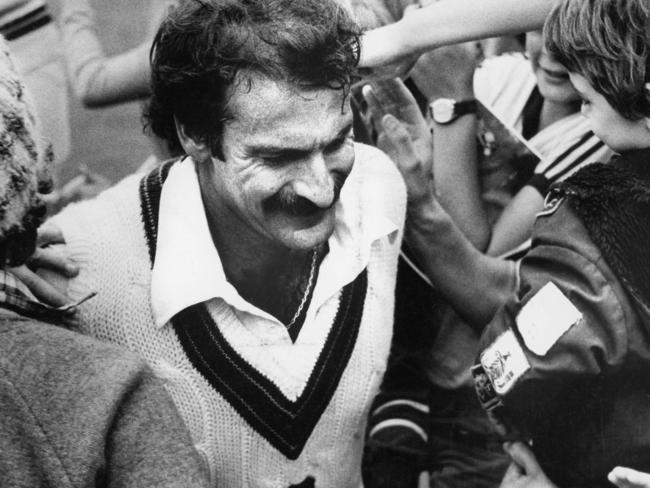
He played 12 more Tests for Australia, amassing 355 wickets in total at an average of 23.92.
Ninety-five of those dismissals were delivered in the gloves of wicketkeeper Rod Marsh — a record of dismissals shared by a bowler and wicketkeeper that remains a record today.
Lillee and Greg Chappell retired from international cricket after the final Test against Pakistan at the SCG in January 1984.
The fast bowler had battled injury in his final year or so and his form was down, but in that last Test he took eight wickets including one with his final ball in Test cricket.
Lillee played first class cricket until 1988, his last matches with Tasmania.
England all-rounder Ian Botham eventually overtook Lillee’s Test wicket record in 1986, with 373 wickets in 94 Tests at 27.86.
He was succeeded in turn by New Zealand paceman Richard Hadlee (431 wickets in 86 Tests at 22.29), Indian quick Kapil Dev (434 wickets in 131 Tests at 29.64), West Indian fast bowler Courtney Walsh (519 wickets in 132 Tests at 24.44) and Australian leg spinner Shane Warne (708 wickets in 145 Tests at 25.41).
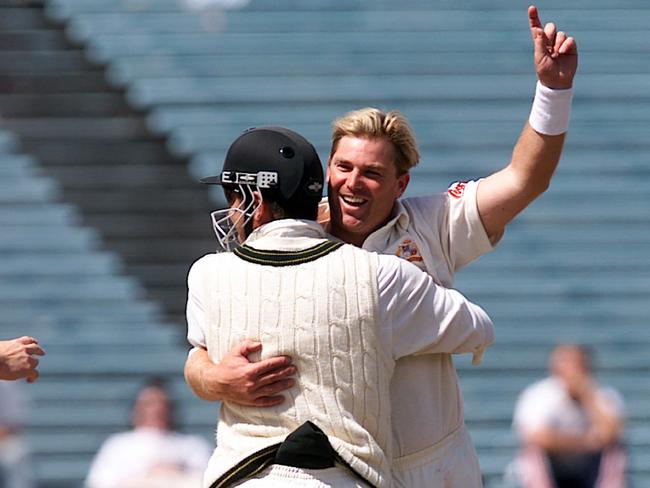
Sri Lankan leggie Muttiah Muralitharan is the current record holder. When he retired from Test cricket in 2010, he had taken 800 wickets in 133 Tests at an average of 22.72.
Dennis Lillee has been named in cricket’s hall of fame and in the Australian Test team of the century.
Now 68, Lillee has served more than a decade as president of the West Australian Cricket Association and was a director of the MRF Pace Foundation, an Indian-based fast bowler coaching clinic, from 1987 to 2012.


